Module 5: Job Order Costing
Introduction to accumulating and assigning costs, what you will learn to do: assign costs to jobs.
Financial and managerial accountants record costs of production in an account called Work in Process. The total of these direct materials, direct labor, and factory overhead costs equal the cost of producing the item.
In order to understand the accounting process, here is a quick review of how financial accountants record transactions:
Let’s take as simple an example as possible. Jackie Ma has decided to make high-end custom skateboards. She starts her business on July 1 by filing the proper forms with the state and then opening a checking account in the name of her new business, MaBoards. She transfers $150,000 from her retirement account into the business account and records it in a journal as follows:
For purposes of this ongoing example, we’ll ignore pennies and dollar signs, and we’ll also ignore selling, general, and administrative costs.
After Jackie writes the journal entry, she posts it to a ledger that currently has only two accounts: Checking Account, and Owner’s Capital.

Debits are entries on the left side of the account, and credits are entries on the right side.
Here is a quick review of debits and credits:
You can view the transcript for “Colin Dodds – Debit Credit Theory (Accounting Rap Song)” here (opens in new window) .
Also, this system of debits and credits is based on the following accounting equation:
Assets = Liabilities + Equity.
- Assets are resources that the company owns
- Liabilities are debts
- Equity is the amount of assets left over after all debts are paid
Let’s look at one more initial transaction before we dive into recording and accumulating direct costs such as materials and labor.
Jackie finds the perfect building for her new business; an old woodworking shop that has most of the equipment she will need. She writes a check from her new business account in the amount of $2,500 for July rent. Because she took managerial accounting in college, she determines this to be an indirect product expense, so she records it as Factory Overhead following a three-step process:
- Analyze transaction
Because her entire facility is devoted to production, she determines that the rent expense is factory overhead.
2. Journalize transaction using debits and credits
If she is using QuickBooks ® or other accounting software, when she enters the transaction into the system, the software will create the journal entry. In any case, whether she does it by hand or computer, the entry will look much like this:
3. Post to the ledger
Again, her computer software will post the journal entry to the ledger, but we will follow this example using a visual system accountants call T-accounts. The T-account is an abbreviated ledger. Click here to view a more detailed example of a ledger .
Jackie posts her journal entry to the ledger (T-accounts here).

She now has three accounts: Checking Account, Owner’s Capital, and Factory Overhead, and the company ledger looks like this:

In a retail business, rent, salaries, insurance, and other operating costs are categorized into accounts classified as expenses. In a manufacturing business, some costs are classified as product costs while others are classified as period costs (selling, general, and administrative).
We’ll treat factory overhead as an expense for now, which is ultimately a sub-category of Owner’s Equity, so our accounting equation now looks like this:
Assets = Liabilities + Owner’s Equity
147,500 = 150,000 – 2,500
Notice that debits offset credits and vice versa. The balance in the checking account is the original deposit of $150,000, less the check written for $2,500. Once the check clears, if Jackie checks her account online, she’ll see that her ledger balance and the balance the bank reports will be the same.
Here is a summary of the rules of debits and credits:
Assets = increased by a debit, decreased by a credit
Liabilities = increased by a credit, decreased by a debit
Owner’s Equity = increased by a credit, decreased by a debit
Revenues increase owner’s equity, therefore an individual revenue account is increased by a credit, decreased by a debit
Expenses decrease owner’s equity, therefore an individual expense account is increased by a debit, decreased by a credit
Here’s Colin Dodds’s Accounting Rap Song again to help you remember the rules of debits and credits:
Let’s continue to explore job costing now by using this accounting system to assign and accumulate direct and indirect costs for each project.
When you are done with this section, you will be able to:
- Record direct materials and direct labor for a job
- Record allocated manufacturing overhead
- Prepare a job cost record

Learning Activities
The learning activities for this section include the following:
- Reading: Direct Costs
- Self Check: Direct Costs
- Reading: Allocated Overhead
- Self Check: Allocated Overhead
- Reading: Subsidiary Ledgers and Records
- Self Check: Subsidiary Ledgers and Records
- Introduction to Accumulating and Assigning Costs. Authored by : Joseph Cooke. Provided by : Lumen Learning. License : CC BY: Attribution
- Colin Dodds - Debit Credit Theory (Accounting Rap Song). Authored by : Mr. Colin Dodds. Located at : https://youtu.be/j71Kmxv7smk . License : All Rights Reserved . License Terms : Standard YouTube License
- What the General Ledger Can Tell You About Your Business. Authored by : Mary Girsch-Bock. Located at : https://www.fool.com/the-blueprint/general-ledger/ . License : All Rights Reserved . License Terms : Standard YouTube License

Privacy Policy

Cost Accumulation

Written by True Tamplin, BSc, CEPF®
Reviewed by subject matter experts.
Updated on April 18, 2024
Fact Checked
Why Trust Finance Strategists?
Table of Contents
How does it work, why do we accumulate costs, why should you care about cost accumulation, reducing the amount of costs that we accumulate, benefits of cost accumulation, cost accumulation vs savings account, the pros and cons of cost accumulation, final thoughts, cost accumulation faqs, what is cost accumulation.
Cost Accumulation is the process of tracking and recording costs incurred in a business or organization, including both direct and indirect expenses.
How does Cost Accumulation help businesses?
Cost Accumulation helps businesses measure their financial performance, ensure compliance with relevant regulations, and control their costs by providing visibility into the cost structure.
What expenses are included in Cost Accumulation?
Cost Accumulation includes both direct and indirect expenses, such as overhead costs, materials, wages & salaries, subcontractor fees, taxes & insurance, and any other costs associated with running the business.
What information is tracked by Cost Accumulation?
Cost Accumulation tracks and records all expenses associated with running a business, including costs incurred at different stages of production, and any other relevant data related to the costs.
How often should Cost Accumulation be performed?
Cost Accumulation should be performed on a regular basis, ideally at least once a month, to ensure an accurate record of the business's financial performance. In addition, all documents should be reviewed regularly and updated as necessary.
About the Author
True Tamplin, BSc, CEPF®
True Tamplin is a published author, public speaker, CEO of UpDigital, and founder of Finance Strategists.
True is a Certified Educator in Personal Finance (CEPF®), author of The Handy Financial Ratios Guide , a member of the Society for Advancing Business Editing and Writing, contributes to his financial education site, Finance Strategists, and has spoken to various financial communities such as the CFA Institute, as well as university students like his Alma mater, Biola University , where he received a bachelor of science in business and data analytics.
To learn more about True, visit his personal website or view his author profiles on Amazon , Nasdaq and Forbes .
Our Services
- Financial Advisor
- Estate Planning Lawyer
- Insurance Broker
- Mortgage Broker
- Retirement Planning
- Tax Services
- Wealth Management
Ask a Financial Professional Any Question
We use cookies to ensure that we give you the best experience on our website. If you continue to use this site we will assume that you are happy with it.
At Finance Strategists, we partner with financial experts to ensure the accuracy of our financial content.
Our team of reviewers are established professionals with decades of experience in areas of personal finance and hold many advanced degrees and certifications.
They regularly contribute to top tier financial publications, such as The Wall Street Journal, U.S. News & World Report, Reuters, Morning Star, Yahoo Finance, Bloomberg, Marketwatch, Investopedia, TheStreet.com, Motley Fool, CNBC, and many others.
This team of experts helps Finance Strategists maintain the highest level of accuracy and professionalism possible.
Why You Can Trust Finance Strategists
Finance Strategists is a leading financial education organization that connects people with financial professionals, priding itself on providing accurate and reliable financial information to millions of readers each year.
We follow strict ethical journalism practices, which includes presenting unbiased information and citing reliable, attributed resources.
Our goal is to deliver the most understandable and comprehensive explanations of financial topics using simple writing complemented by helpful graphics and animation videos.
Our writing and editorial staff are a team of experts holding advanced financial designations and have written for most major financial media publications. Our work has been directly cited by organizations including Entrepreneur, Business Insider, Investopedia, Forbes, CNBC, and many others.
Our mission is to empower readers with the most factual and reliable financial information possible to help them make informed decisions for their individual needs.
How It Works
Step 1 of 3, ask any financial question.
Ask a question about your financial situation providing as much detail as possible. Your information is kept secure and not shared unless you specify.

Step 2 of 3
Our team will connect you with a vetted, trusted professional.
Someone on our team will connect you with a financial professional in our network holding the correct designation and expertise.

Step 3 of 3
Get your questions answered and book a free call if necessary.
A financial professional will offer guidance based on the information provided and offer a no-obligation call to better understand your situation.

Where Should We Send Your Answer?

Just a Few More Details
We need just a bit more info from you to direct your question to the right person.
Tell Us More About Yourself
Is there any other context you can provide.
Pro tip: Professionals are more likely to answer questions when background and context is given. The more details you provide, the faster and more thorough reply you'll receive.
What is your age?
Are you married, do you own your home.
- Owned outright
- Owned with a mortgage
Do you have any children under 18?
- Yes, 3 or more
What is the approximate value of your cash savings and other investments?
- $50k - $250k
- $250k - $1m
Pro tip: A portfolio often becomes more complicated when it has more investable assets. Please answer this question to help us connect you with the right professional.
Would you prefer to work with a financial professional remotely or in-person?
- I would prefer remote (video call, etc.)
- I would prefer in-person
- I don't mind, either are fine
What's your zip code?
- I'm not in the U.S.
Submit to get your question answered.
A financial professional will be in touch to help you shortly.

Part 1: Tell Us More About Yourself
Do you own a business, which activity is most important to you during retirement.
- Giving back / charity
- Spending time with family and friends
- Pursuing hobbies
Part 2: Your Current Nest Egg
Part 3: confidence going into retirement, how comfortable are you with investing.
- Very comfortable
- Somewhat comfortable
- Not comfortable at all
How confident are you in your long term financial plan?
- Very confident
- Somewhat confident
- Not confident / I don't have a plan
What is your risk tolerance?
How much are you saving for retirement each month.
- None currently
- Minimal: $50 - $200
- Steady Saver: $200 - $500
- Serious Planner: $500 - $1,000
- Aggressive Saver: $1,000+
How much will you need each month during retirement?
- Bare Necessities: $1,500 - $2,500
- Moderate Comfort: $2,500 - $3,500
- Comfortable Lifestyle: $3,500 - $5,500
- Affluent Living: $5,500 - $8,000
- Luxury Lifestyle: $8,000+
Part 4: Getting Your Retirement Ready
What is your current financial priority.
- Getting out of debt
- Growing my wealth
- Protecting my wealth
Do you already work with a financial advisor?
Which of these is most important for your financial advisor to have.
- Tax planning expertise
- Investment management expertise
- Estate planning expertise
- None of the above
Where should we send your answer?
Submit to get your retirement-readiness report., get in touch with, great the financial professional will get back to you soon., where should we send the downloadable file, great hit “submit” and an advisor will send you the guide shortly., create a free account and ask any financial question, learn at your own pace with our free courses.
Take self-paced courses to master the fundamentals of finance and connect with like-minded individuals.
Get Started
Hey, did we answer your financial question.
We want to make sure that all of our readers get their questions answered.
Great, Want to Test Your Knowledge of This Lesson?
Create an Account to Test Your Knowledge of This Topic and Thousands of Others.

Get Your Question Answered by a Financial Professional
Create a free account and submit your question. We'll make sure a financial professional gets back to you shortly.
To Ensure One Vote Per Person, Please Include the Following Info
Great thank you for voting..
Cost Accumulation
Cost accumulation refers to the systematic process of recording, classifying, and summarizing costs incurred by a business entity for the purpose of monitoring and controlling expenses. It involves the collection of cost data from various sources and the subsequent allocation and assignment of these costs to specific products, services, or other cost objects. Cost accumulation is an essential component of financial accounting and managerial decision-making, providing crucial information for evaluating profitability, determining pricing strategies, and assessing the efficiency of operations.
Description:
In the realm of finance, cost accumulation is a fundamental practice that enables organizations to track and analyze their expenditures systematically. By collecting data on the costs associated with materials, labor, overheads, and other resources, businesses can gain insights into their cost structure and identify areas of inefficiency or potential cost savings. This information is vital for effective financial planning, budgeting, and cost control.
The process of cost accumulation typically begins with the identification and collection of relevant cost data. This data can be sourced from various areas such as purchase invoices, payroll records, utility bills, and other financial documents. It is crucial to ensure the accuracy and completeness of the data obtained, as any errors or omissions can lead to distorted cost information and subsequent decision-making.
Once the data is gathered, the next step in cost accumulation is to classify and allocate the costs to different cost categories. This involves categorizing costs into direct and indirect categories and determining the most appropriate allocation basis for each cost type. Direct costs can be easily traced to a specific product or service, while indirect costs require allocation based on reasonable and consistent methods such as activity-based costing or cost drivers.
After the allocation process, the accumulated costs are then assigned to specific cost objects, such as products, services, projects, or departments. This enables businesses to ascertain the actual costs associated with each cost object, providing a basis for determining product or service profitability, evaluating the performance of different business units, or assessing the financial viability of various projects.
Moreover, cost accumulation plays a pivotal role in the field of managerial accounting, where it facilitates the calculation of product costs for inventory valuation and financial reporting purposes. The cost accumulation process can involve various methods, such as job costing, process costing, or activity-based costing, depending on the nature of the business and the level of cost detail required.
By implementing effective cost accumulation practices, organizations can derive several benefits. Firstly, it allows for better cost control, as the detailed knowledge of costs helps management identify areas of wasteful expenditure and implement measures to reduce costs. Secondly, cost accumulation assists in strategic decision-making, enabling businesses to evaluate the profitability and feasibility of new ventures, product lines, or pricing strategies. Additionally, it provides a basis for performance measurement and evaluation, allowing companies to monitor their financial performance against predetermined targets or industry benchmarks.
In conclusion, cost accumulation is an integral function within the domains of finance, accounting, and business management. It serves as a foundation for financial analysis and decision-making, providing valuable insights into the cost structure and performance of an organization. By utilizing systematic cost accumulation techniques, businesses can enhance their financial management capabilities, optimize resource allocation, and strive towards improved profitability and success.

What is Cost Assignment?
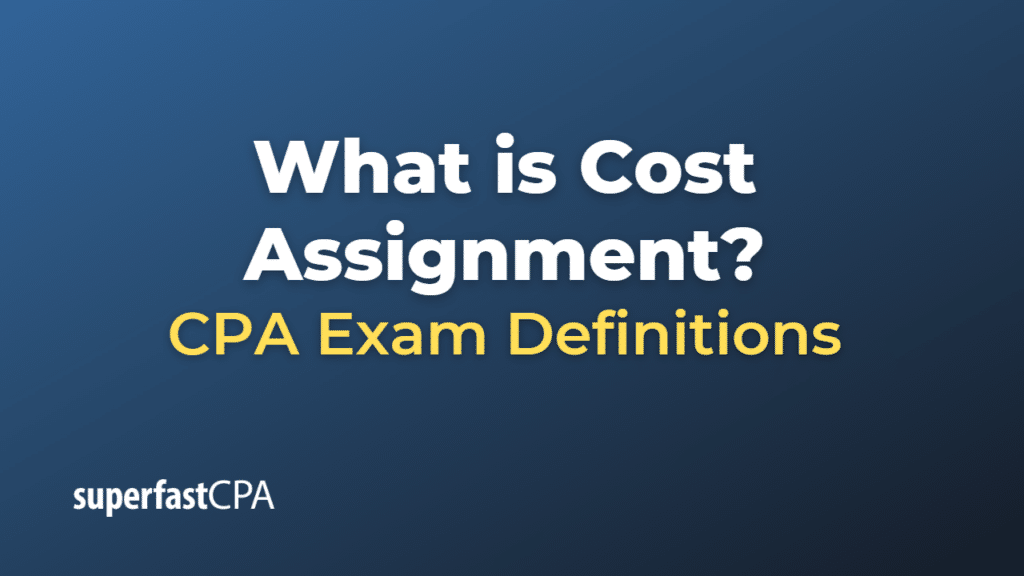
Share This...
Cost assignment.
Cost assignment is the process of associating costs with cost objects, such as products, services, departments, or projects. It encompasses the identification, measurement, and allocation of both direct and indirect costs to ensure a comprehensive understanding of the resources consumed by various cost objects within an organization. Cost assignment is a crucial aspect of cost accounting and management accounting, as it helps organizations make informed decisions about pricing, resource allocation, budgeting, and performance evaluation.
There are two main components of cost assignment:
- Direct cost assignment: Direct costs are those costs that can be specifically traced or identified with a particular cost object. Examples of direct costs include direct materials, such as raw materials used in manufacturing a product, and direct labor, such as the wages paid to workers directly involved in producing a product or providing a service. Direct cost assignment involves linking these costs directly to the relevant cost objects, typically through invoices, timesheets, or other documentation.
- Indirect cost assignment (Cost allocation): Indirect costs, also known as overhead or shared costs, are those costs that cannot be directly traced to a specific cost object or are not economically feasible to trace directly. Examples of indirect costs include rent, utilities, depreciation, insurance, and administrative expenses. Since indirect costs cannot be assigned directly to cost objects, organizations use various cost allocation methods to distribute these costs in a systematic and rational manner. Some common cost allocation methods include direct allocation, step-down allocation, reciprocal allocation, and activity-based costing (ABC).
In summary, cost assignment is the process of associating both direct and indirect costs with cost objects, such as products, services, departments, or projects. It plays a critical role in cost accounting and management accounting by providing organizations with the necessary information to make informed decisions about pricing, resource allocation, budgeting, and performance evaluation.
Example of Cost Assignment
Let’s consider an example of cost assignment at a bakery called “BreadHeaven” that produces two types of bread: white bread and whole wheat bread.
BreadHeaven incurs various direct and indirect costs to produce the bread. Here’s how the company would assign these costs to the two types of bread:
- Direct cost assignment:
Direct costs can be specifically traced to each type of bread. In this case, the direct costs include:
- Direct materials: BreadHeaven purchases flour, yeast, salt, and other ingredients required to make the bread. The cost of these ingredients can be directly traced to each type of bread.
- Direct labor: BreadHeaven employs bakers who are directly involved in making the bread. The wages paid to these bakers can be directly traced to each type of bread based on the time spent working on each bread type.
For example, if BreadHeaven spent $2,000 on direct materials and $1,500 on direct labor for white bread, and $3,000 on direct materials and $2,500 on direct labor for whole wheat bread, these costs would be directly assigned to each bread type.
- Indirect cost assignment (Cost allocation):
Indirect costs, such as rent, utilities, equipment maintenance, and administrative expenses, cannot be directly traced to each type of bread. BreadHeaven uses a cost allocation method to assign these costs to the two types of bread.
Suppose the total indirect costs for the month are $6,000. BreadHeaven decides to use the number of loaves produced as the allocation base , as it believes that indirect costs are driven by the production volume. During the month, the bakery produces 3,000 loaves of white bread and 2,000 loaves of whole wheat bread, totaling 5,000 loaves.
The allocation rate per loaf is:
Allocation Rate = Total Indirect Costs / Total Loaves Allocation Rate = $6,000 / 5,000 loaves = $1.20 per loaf
BreadHeaven allocates the indirect costs to each type of bread using the allocation rate and the number of loaves produced:
- White bread: 3,000 loaves × $1.20 per loaf = $3,600
- Whole wheat bread: 2,000 loaves × $1.20 per loaf = $2,400
After completing the cost assignment, BreadHeaven can determine the total costs for each type of bread:
- White bread: $2,000 (direct materials) + $1,500 (direct labor) + $3,600 (indirect costs) = $7,100
- Whole wheat bread: $3,000 (direct materials) + $2,500 (direct labor) + $2,400 (indirect costs) = $7,900
By assigning both direct and indirect costs to each type of bread, BreadHeaven gains a better understanding of the full cost of producing each bread type, which can inform pricing decisions, resource allocation, and performance evaluation.
Other Posts You'll Like...
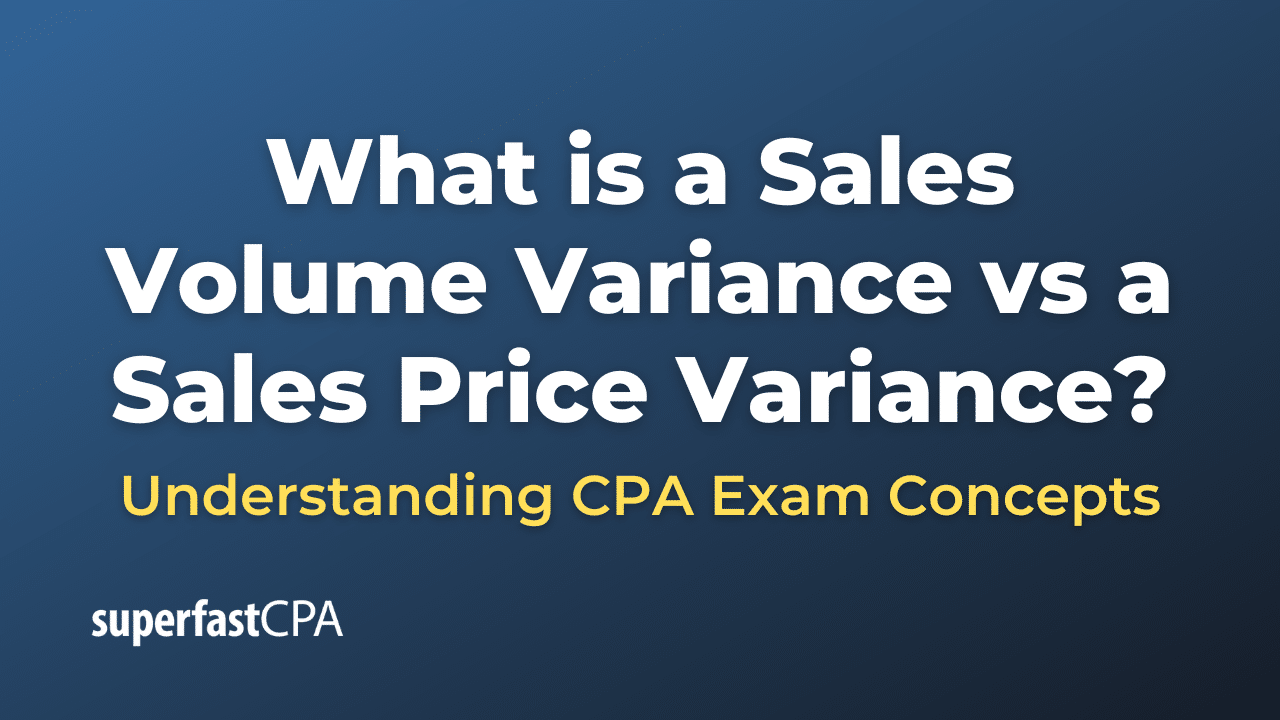
What is a Sales Volume Variance vs a Sales Price Variance?
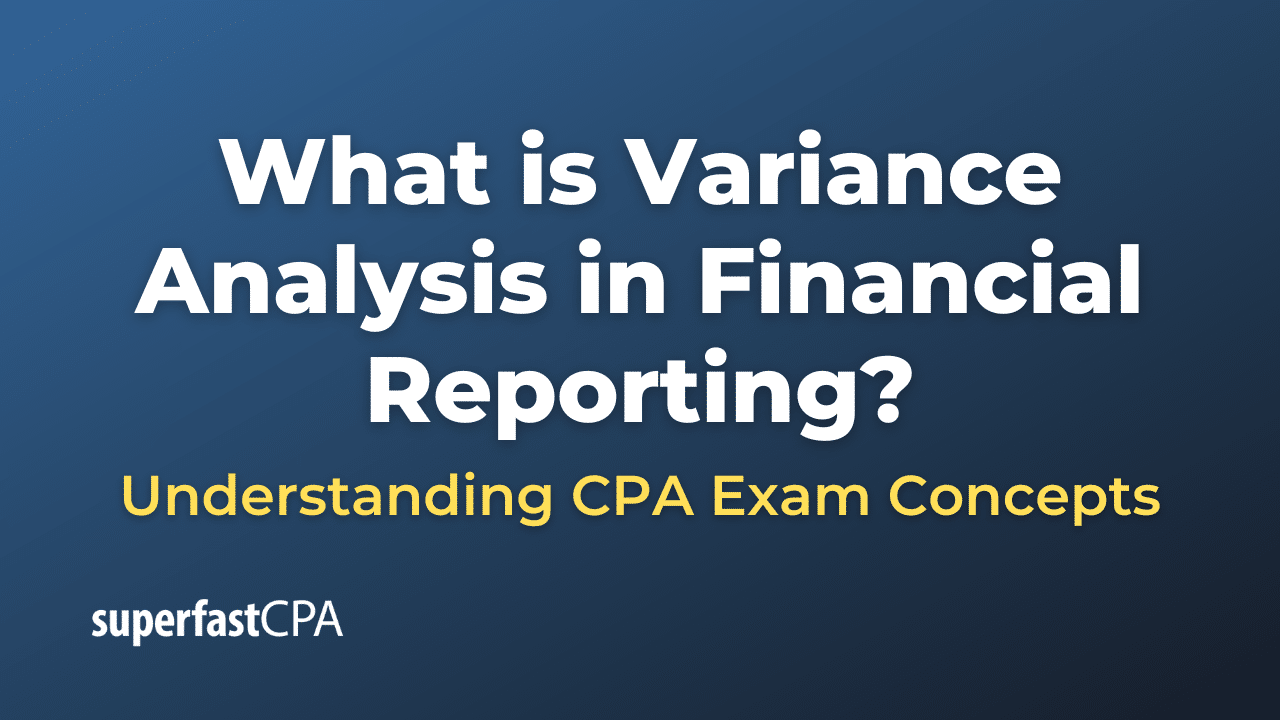
What is Variance Analysis in Financial Reporting?

What is a Master Budget vs a Flexible Budget in Accounting?
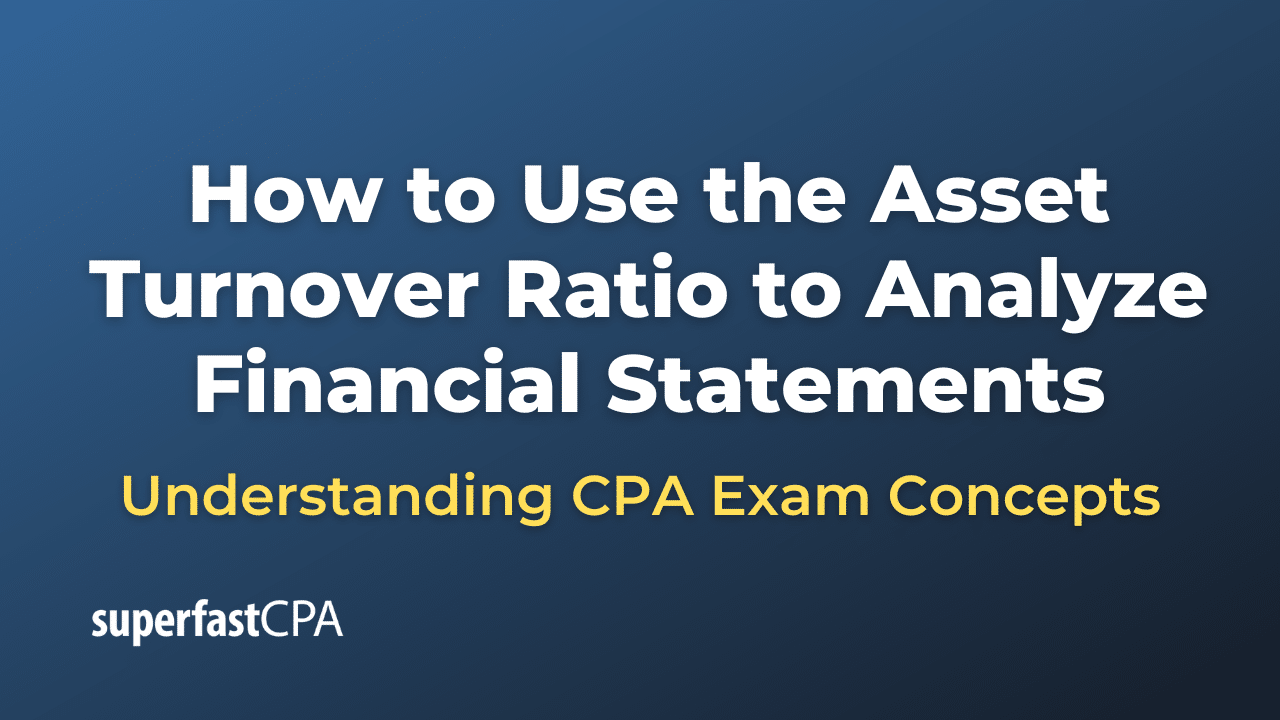
How to Use the Asset Turnover Ratio to Analyze Financial Statements
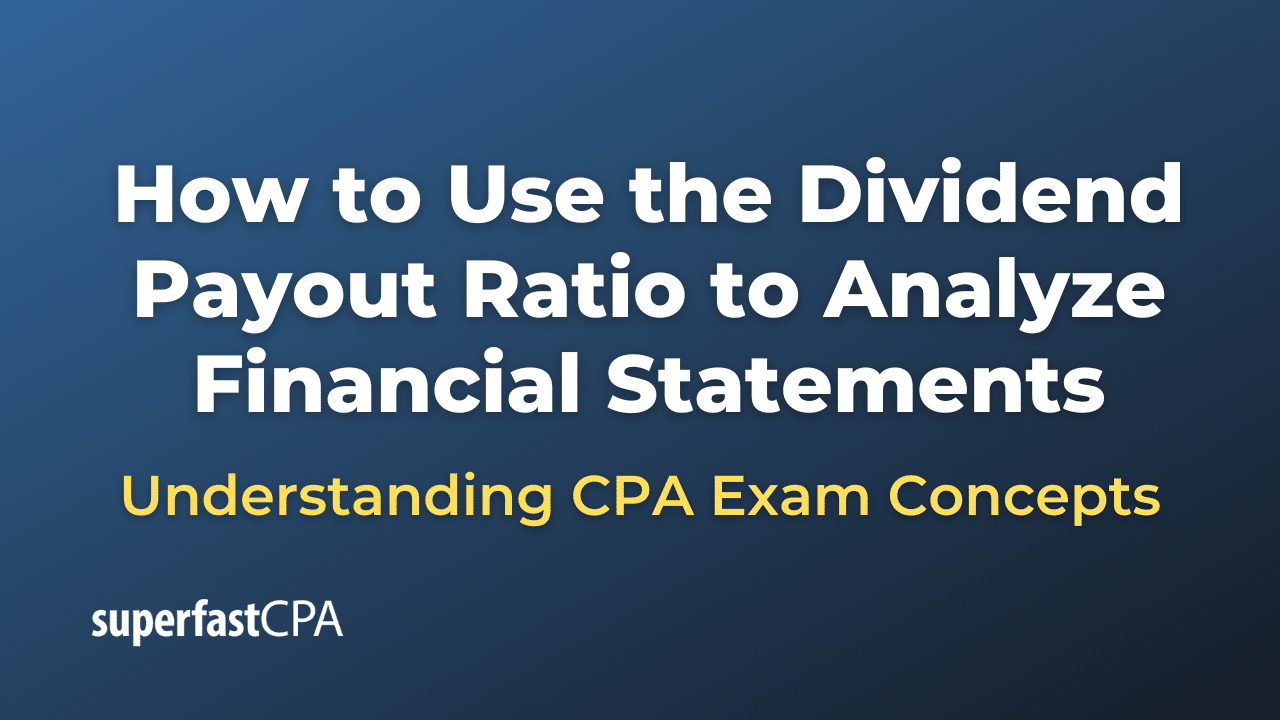
How to Use the Dividend Payout Ratio to Analyze Financial Statements
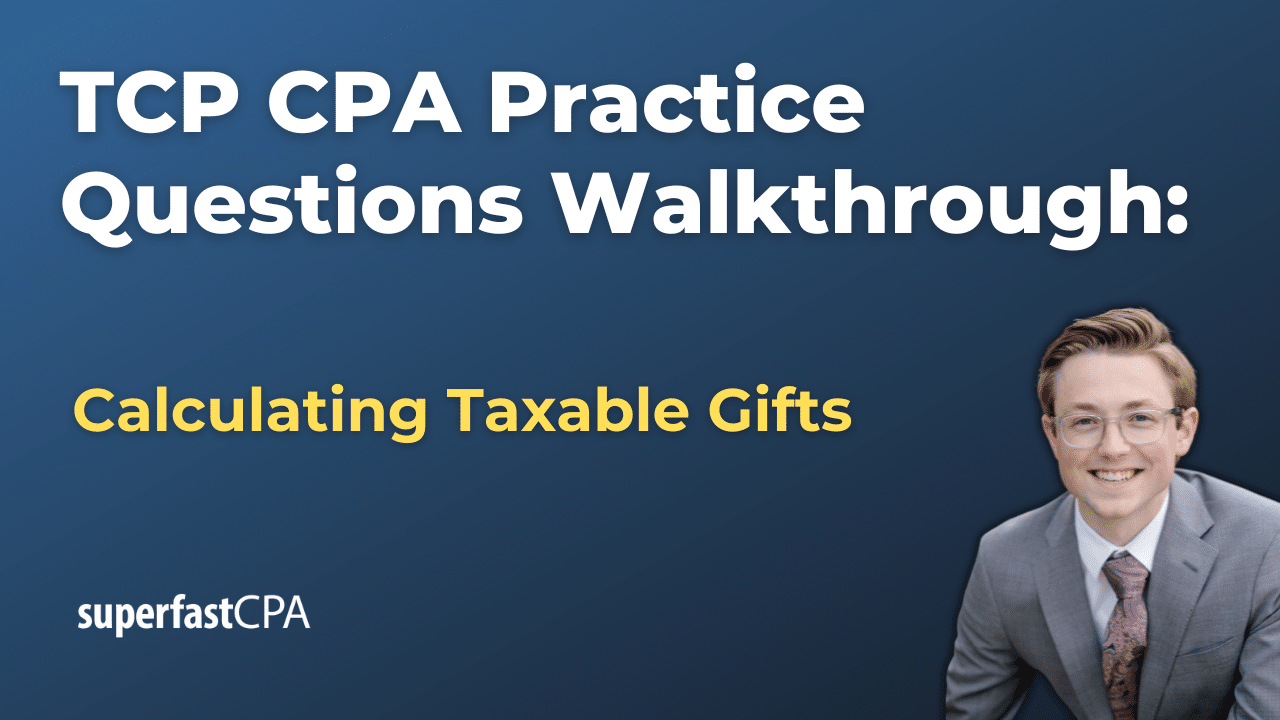
TCP CPA Practice Questions Explained: Calculating Taxable Gifts
Helpful links.
- Learn to Study "Strategically"
- How to Pass a Failed CPA Exam
- Samples of SFCPA Study Tools
- SuperfastCPA Podcast
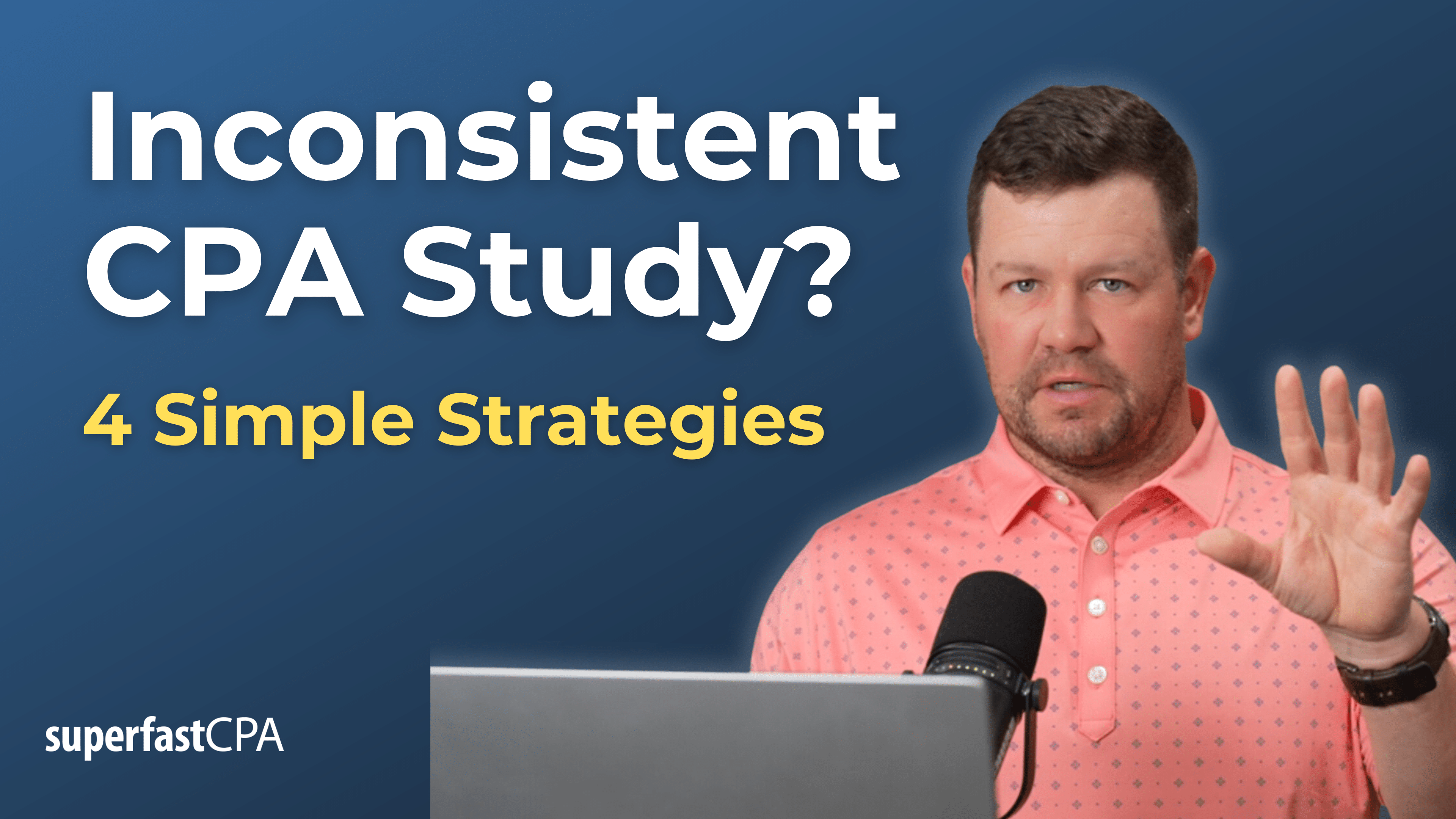
Inconsistent CPA Study? Try These 4 Strategies

When More Study Time Isn’t the Answer: How Thomas Passed His CPA Exams

How Ekta Passed Her CPA 6 Months Faster Than She Planned

2024 CPA Exams F.A.Q.s Answered

How Jackie Got Re-Motivated by Simplifying Her CPA Study

The Study Tweaks That Turned Kevin’s CPA Journey Around
Want to pass as fast as possible, ( and avoid failing sections ), watch one of our free "study hacks" trainings for a free walkthrough of the superfastcpa study methods that have helped so many candidates pass their sections faster and avoid failing scores....

Make Your Study Process Easier and more effective with SuperfastCPA
Take Your CPA Exams with Confidence
- Free "Study Hacks" Training
- SuperfastCPA PRO Course
- SuperfastCPA Review Notes
- SuperfastCPA Audio Notes
- SuperfastCPA Quizzes
Get Started
- Free "Study Hacks Training"
- Read Reviews of SuperfastCPA
- Busy Candidate's Guide to Passing
- Subscribe to the Podcast
- Purchase Now
- Nate's Story
- Interviews with SFCPA Customers
- Our Study Methods
- SuperfastCPA Reviews
- CPA Score Release Dates
- The "Best" CPA Review Course
- Do You Really Need the CPA License?
- 7 Habits of Successful Candidates
- "Deep Work" & CPA Study
- Cost Classifications
- Relevant Cost of Material
- Manufacturing Overhead Costs
- Conversion Costs
- Quality Costs
- Revenue Expenditure
- Product Cost vs Period Cost
- Direct Costs and Indirect Costs
- Prime Costs and Conversion Costs
- Relevant vs Irrelevant Costs
- Avoidable and Unavoidable Costs
- Cost Allocation
- Joint Products
- Accounting for Joint Costs
- Service Department Cost Allocation
- Repeated Distribution Method
- Simultaneous Equation Method
- Specific Order of Closing Method
- Direct Allocation Method
Cost allocation is the process by which the indirect costs are distributed among different cost objects such as a project, a department, a branch, a customer, etc. It involves identifying the cost object, identifying and accumulating the costs that are incurred and assigning them to the cost object on some reasonable basis.
Cost allocation is important for both pricing and planning and control decisions. If costs are not accurately calculated, a business might never know which products are making money and which ones are losing money. If cost are mis-allocated, a business may be charging wrong price to its customers and/or it might be wasting resources on products that are wrongly categorized as profitable.
Cost allocation is a sub-process of cost assignment , which is the overall process of finding total cost of a cost object. Cost assignment involves both cost tracing and cost allocation. Cost tracing encompasses finding direct costs of a cost object while the cost allocation is concerned with indirect cost charge.
Steps in cost allocation process
Typical cost allocation mechanism involves:
- Identifying the object to which the costs have to be assigned,
- Accumulating the costs in different pools,
- Identifying the most appropriate basis/method for allocating the cost.
Cost object
A cost object is an item for which a business need to separately estimate cost.
Examples of cost object include a branch, a product line, a service line, a customer, a department, a brand, a project, etc.
A cost pool is the account head in which costs are accumulated for further assignment to cost objects.
Examples of cost pools include factory rent, insurance, machine maintenance cost, factory fuel, etc. Selection of cost pool depends on the cost allocation base used. For example if a company uses just one allocation base say direct labor hours, it might use a broad cost pool such as fixed manufacturing overheads. However, if it uses more specific cost allocation bases, for example labor hours, machine hours, etc. it might define narrower cost pools.
Cost driver
A cost driver is any variable that ‘drives’ some cost. If increase or decrease in a variable causes an increase or decrease is a cost that variable is a cost driver for that cost.
Examples of cost driver include:
- Number of payments processed can be a good cost driver for salaries of Accounts Payable section of accounting department,
- Number of purchase orders can be a good cost driver for cost of purchasing department,
- Number of invoices sent can be a good cost driver for cost of billing department,
- Number of units shipped can be a good cost driver for cost of distribution department, etc.
While direct costs are easily traced to cost objects, indirect costs are allocated using some systematic approach.
Cost allocation base
Cost allocation base is the variable that is used for allocating/assigning costs in different cost pools to different cost objects. A good cost allocation base is something which is an appropriate cost driver for a particular cost pool.
T2F is a university café owned an operated by a student. While it has plans for expansion it currently offers two products: (a) tea & coffee and (b) shakes. It employs 2 people: Mr. A, who looks after tea & coffee and Mr. B who prepares and serves shakes & desserts.
Its costs for the first quarter are as follows:
Total tea and coffee sales and shakes sales were $50,000 & $60,000 respectively. Number of customers who ordered tea or coffee were 10,000 while those ordering shakes were 8,000.
The owner is interested in finding out which product performed better.
Salaries of Mr. A & B and direct materials consumed are direct costs which do not need any allocation. They are traced directly to the products. The rest of the costs are indirect costs and need some basis for allocation.
Cost objects in this situation are the products: hot beverages (i.e. tea & coffee) & shakes. Cost pools include rent, electricity, music, internet and wi-fi subscription and magazines.
Appropriate cost drivers for the indirect costs are as follows:
Since number of customers is a good cost driver for almost all the costs, the costs can be accumulated together to form one cost pool called manufacturing overheads. This would simply the cost allocation.
Total manufacturing overheads for the first quarter are $19,700. Total number of customers who ordered either product are 18,000. This gives us a cost allocation base of $1.1 per customer ($19,700/18,000).
A detailed cost assignment is as follows:
Manufacturing overheads allocated to Tea & Cofee = $1.1×10,000
Manufacturing overheads allocated to Shakes = $1.1×8,000
by Irfanullah Jan, ACCA and last modified on Jul 22, 2020
Related Topics
- Cost Behavior
All Chapters in Accounting
- Intl. Financial Reporting Standards
- Introduction
- Accounting Principles
- Business Combinations
- Accounting Cycle
- Financial Statements
- Non-Current Assets
- Fixed Assets
- Investments
- Revenue Recognition
- Current Assets
- Receivables
- Inventories
- Shareholders' Equity
- Liability Accounts
- Accounting for Taxes
- Employee Benefits
- Accounting for Partnerships
- Financial Ratios
- Cost Accounting Systems
- CVP Analysis
- Relevant Costing
- Capital Budgeting
- Master Budget
- Inventory Management
- Cash Management
- Standard Costing
Current Chapter
XPLAIND.com is a free educational website; of students, by students, and for students. You are welcome to learn a range of topics from accounting, economics, finance and more. We hope you like the work that has been done, and if you have any suggestions, your feedback is highly valuable. Let's connect!
Copyright © 2010-2024 XPLAIND.com
- Search Search Please fill out this field.
What Is Activity-Based Costing (ABC)?
How activity-based costing (abc) works, requirements for activity-based costing (abc), benefits of activity-based costing (abc).
- Corporate Finance
Activity-Based Costing (ABC): Method and Advantages Defined with Example
:max_bytes(150000):strip_icc():format(webp)/wk_headshot_aug_2018_02__william_kenton-5bfc261446e0fb005118afc9.jpg)
Activity-based costing (ABC) is a costing method that assigns overhead and indirect costs to related products and services. This accounting method of costing recognizes the relationship between costs, overhead activities, and manufactured products, assigning indirect costs to products less arbitrarily than traditional costing methods. However, some indirect costs, such as management and office staff salaries, are difficult to assign to a product.
Key Takeaways
- Activity-based costing (ABC) is a method of assigning overhead and indirect costs—such as salaries and utilities—to products and services.
- The ABC system of cost accounting is based on activities, which are considered any event, unit of work, or task with a specific goal.
- An activity is a cost driver , such as purchase orders or machine setups.
- The cost driver rate, which is the cost pool total divided by cost driver, is used to calculate the amount of overhead and indirect costs related to a particular activity.
ABC is used to get a better grasp on costs, allowing companies to form a more appropriate pricing strategy.
Investopedia / Theresa Chiechi
Activity-based costing (ABC) is mostly used in the manufacturing industry since it enhances the reliability of cost data, hence producing nearly true costs and better classifying the costs incurred by the company during its production process.
This costing system is used in target costing, product costing, product line profitability analysis, customer profitability analysis, and service pricing. Activity-based costing is used to get a better grasp on costs, allowing companies to form a more appropriate pricing strategy.
The formula for activity-based costing is the cost pool total divided by cost driver, which yields the cost driver rate. The cost driver rate is used in activity-based costing to calculate the amount of overhead and indirect costs related to a particular activity.
The ABC calculation is as follows:
- Identify all the activities required to create the product.
- Divide the activities into cost pools, which includes all the individual costs related to an activity—such as manufacturing. Calculate the total overhead of each cost pool.
- Assign each cost pool activity cost drivers, such as hours or units.
- Calculate the cost driver rate by dividing the total overhead in each cost pool by the total cost drivers.
- Divide the total overhead of each cost pool by the total cost drivers to get the cost driver rate.
- Multiply the cost driver rate by the number of cost drivers.
As an activity-based costing example, consider Company ABC that has a $50,000 per year electricity bill. The number of labor hours has a direct impact on the electric bill. For the year, there were 2,500 labor hours worked, which in this example is the cost driver. Calculating the cost driver rate is done by dividing the $50,000 a year electric bill by the 2,500 hours, yielding a cost driver rate of $20. For Product XYZ, the company uses electricity for 10 hours. The overhead costs for the product are $200, or $20 times 10.
Activity-based costing benefits the costing process by expanding the number of cost pools that can be used to analyze overhead costs and by making indirect costs traceable to certain activities.
The ABC system of cost accounting is based on activities, which are any events, units of work, or tasks with a specific goal, such as setting up machines for production, designing products, distributing finished goods, or operating machines. Activities consume overhead resources and are considered cost objects.
Under the ABC system, an activity can also be considered as any transaction or event that is a cost driver. A cost driver, also known as an activity driver, is used to refer to an allocation base. Examples of cost drivers include machine setups, maintenance requests, consumed power, purchase orders, quality inspections, or production orders.
There are two categories of activity measures: transaction drivers, which involve counting how many times an activity occurs, and duration drivers, which measure how long an activity takes to complete.
Unlike traditional cost measurement systems that depend on volume count, such as machine hours and/or direct labor hours, to allocate indirect or overhead costs to products, the ABC system classifies five broad levels of activity that are, to a certain extent, unrelated to how many units are produced. These levels include batch-level activity , unit-level activity, customer-level activity, organization-sustaining activity, and product-level activity.
Activity-based costing (ABC) enhances the costing process in three ways. First, it expands the number of cost pools that can be used to assemble overhead costs. Instead of accumulating all costs in one company-wide pool, it pools costs by activity.
Second, it creates new bases for assigning overhead costs to items such that costs are allocated based on the activities that generate costs instead of on volume measures, such as machine hours or direct labor costs.
Finally, ABC alters the nature of several indirect costs, making costs previously considered indirect—such as depreciation , utilities, or salaries—traceable to certain activities. Alternatively, ABC transfers overhead costs from high-volume products to low-volume products, raising the unit cost of low-volume products.
Chartered Global Management Accountant. " Activity-Based Costing (ABC) ."
:max_bytes(150000):strip_icc():format(webp)/Activity-driver-analysis-4202077-FINAL-0a7e89ba2d5649e1ba480c9af08a9c89.png)
- Terms of Service
- Editorial Policy
- Privacy Policy
- Your Privacy Choices
- Subscriber Services
- For Authors
- Publications
- Archaeology
- Art & Architecture
- Bilingual dictionaries
- Classical studies
- Encyclopedias
- English Dictionaries and Thesauri
- Language reference
- Linguistics
- Media studies
- Medicine and health
- Names studies
- Performing arts
- Science and technology
- Social sciences
- Society and culture
- Overview Pages
- Subject Reference
- English Dictionaries
- Bilingual Dictionaries
Recently viewed (0)
- Save Search
- Share This Facebook LinkedIn Twitter
Related Content
More like this.
Show all results sharing these subjects:
- Business and Management
cost accumulation
Quick reference.
The process of collecting costs as a product progresses through the production system, enabling the total cost of manufacture to be built up in a sequential fashion.
From: cost accumulation in A Dictionary of Accounting »
Subjects: Social sciences — Business and Management
Related content in Oxford Reference
Reference entries.
View all related items in Oxford Reference »
Search for: 'cost accumulation' in Oxford Reference »
- Oxford University Press
PRINTED FROM OXFORD REFERENCE (www.oxfordreference.com). (c) Copyright Oxford University Press, 2023. All Rights Reserved. Under the terms of the licence agreement, an individual user may print out a PDF of a single entry from a reference work in OR for personal use (for details see Privacy Policy and Legal Notice ).
date: 28 May 2024
- Cookie Policy
- Privacy Policy
- Legal Notice
- Accessibility
- [66.249.64.20|185.66.14.236]
- 185.66.14.236
Character limit 500 /500

IMAGES
VIDEO
COMMENTS
Cost Accumulation Vs Cost Assignment Vs Cost Tracing. Sometimes, both Cost Assignment and Cost Accumulation are loosely called and referred to as the same. But it is not so, and they both are different. Cost Assignment is the identification and attachment of costs to the respective costs driver. It is a process of linking costs to their place ...
A process system accumulates costs by cost center and then assigns average costs to products. It is designed for production processes that create large quantities of units over an extended period of time. Cost accumulation is the use of a cost accounting system to collect cost information. It is used to make informed operational decisions.
Cost allocation is the process of identifying, accumulating, and assigning costs to costs objects such as departments, products, programs, or a branch of a company. It involves identifying the cost objects in a company, identifying the costs incurred by the cost objects, and then assigning the costs to the cost objects based on specific criteria.
Let's continue to explore job costing now by using this accounting system to assign and accumulate direct and indirect costs for each project. When you are done with this section, you will be able to: Record direct materials and direct labor for a job. Record allocated manufacturing overhead. Prepare a job cost record.
What is Cost Assignment? Cost assignment is the allocation of costs to the activities or objects that triggered the incurrence of the costs. The concept is heavily used in activity-based costing, where overhead costs are traced back to the actions causing the overhead to be incurred. The cost assignment is based on one or more cost drivers.. Example of a Cost Assignment
Benefits of Cost Accumulation. There are several benefits to having cost accumulation in place. One is that it helps make sure all costs are accounted for and given a certain value, which then makes the company's revenue higher than its expenses. This then helps companies or people actually be able to make money by doing what they do best.
Cost accounting is an accounting method that aims to capture a company's costs of production by assessing the input costs of each step of production as well as fixed costs, such as depreciation of ...
Cost accumulation refers to the systematic process of recording, classifying, and summarizing costs incurred by a business entity for the purpose of monitoring and controlling expenses. It involves the collection of cost data from various sources and the subsequent allocation and assignment of these costs to specific products, services, or ...
In summary, cost accumulation is the process of collecting, measuring, and categorizing costs to support cost analysis, allocation, and control within an organization. It forms the foundation of cost accounting and plays a vital role in managing costs, making informed financial decisions, and improving profitability and efficiency.
So your total assigned cost to produce one artisan-crafted backpack is $42.30. Your equation incorporating your indirect costs looks like this: $42 + ($30/100) + ($500/100) = $42.30. Now you're in a position to determine how much profit you want. If you want to make a $20 profit, you can add that to your cost of $42.30.
Cost Assignment. Cost assignment is the process of associating costs with cost objects, such as products, services, departments, or projects. It encompasses the identification, measurement, and allocation of both direct and indirect costs to ensure a comprehensive understanding of the resources consumed by various cost objects within an ...
Activity cost assignment definition. January 10, 2024. Activity cost assignment involves the use of to assign to . The concept is used in to give more visibility to the total amount of costs that are incurred by cost objects. Cost assignment is essential to a better understanding of the true cost of cost objects. With proper activity cost ...
A cost object is an item for which a business need to separately estimate cost. Examples of cost object include a branch, a product line, a service line, a customer, a department, a brand, a project, etc. Cost pool. A cost pool is the account head in which costs are accumulated for further assignment to cost objects.
Identify cost objects and distinguish between direct costs versus indirect costs. LO 4-2 . Allocate indirect costs to cost objects. LO 4-3 . Identify the most appropriate cost driver. LO 4-4 . Allocate joint costs to joint products. LO 4-5 . Recognize the effects of cost allocation on employee motivation. LO 4-6
Cost accumulation is the collection of costs in an organized fashion by means of a cost accounting system. There are two primary approaches to cost accumulation: job order and process costing. Under a job order system, the three basic elements of costs: direct materials, direct labor, and overhead, are accumulated according to assigned job numbers.
The cost allocation method is a process that facilitates identification and assignment of costs to products, departments, branches or programs based on certain criteria. ... Once the cost objects are identified and established, the next step involves the addition or accumulation of the cost into a defined cost pool and allocate the cost objects ...
Comparison of cost accumulation, cost assignment, and cost tracking. Sometimes, the terms "cost assignment" and "cost accumulation" are used interchangeably. However, this is untrue, as they are both distinct. Cost assignment is the process of identifying and tying costs to the appropriate cost driver. It is a method of tying costs to where ...
Activity-Based Costing - ABC: Activity-based costing (ABC) is an accounting method that identifies the activities that a firm performs and then assigns indirect costs to products. An activity ...
In order to perform these functions, a cost accumulation system is required that assigns costs to cost objects (like, products, services, or customers) accurately. This cost assignment system is referred to as, job-order costing system. The costs that are assigned to cost objects can be divided into - direct costs and indirect costs.
Explanation of Solution. Difference between cost allocation and cost assignment is as follows: Cost assignment is the process of allocating costs to cost pools and cost objects either by direct tracing or allocation. Direct tracing is used for allocating direct costs, and allocation is used for indirect costs.
Quick Reference. The process of collecting costs as a product progresses through the production system, enabling the total cost of manufacture to be built up in a sequential fashion. From: cost accumulation in A Dictionary of Accounting ». Subjects: Social sciences — Business and Management.
The process of using cost information to assess and manage the activities of an organization is known as =Cost pooling =Cost accumulation =Cost assignment =Identifying cost objects =Cost accumulation. Which of the following statements does not describe a characteristic of management accounting?
The remuneration for the above position comprises an annual base salary starting at USD 64,121 (subject to mandatory deductions for pension contributions and health insurance, as applicable), a variable post adjustment, which reflects the cost of living in a particular duty station, and currently amounts to USD 2250 per month for the duty ...
Phosphorus deficiency is one of the main constraints to olive production in alkaline soils. The high cost of phosphorus fertilizers may represent an insurmountable obstacle in many countries, leaving the exploitation of their own rock phosphate (RP) as the only low-cost and long-term alternative. The aim of this work was to study the long-term effect of agronomic application of RP (amounts ...